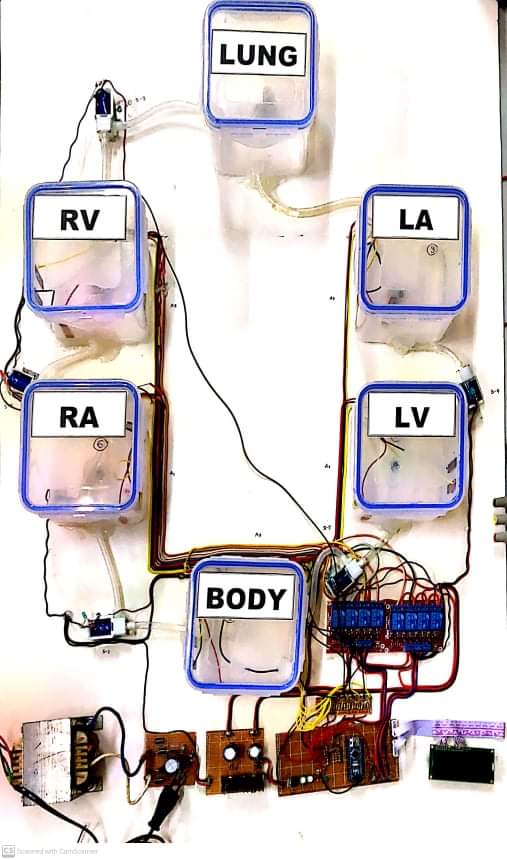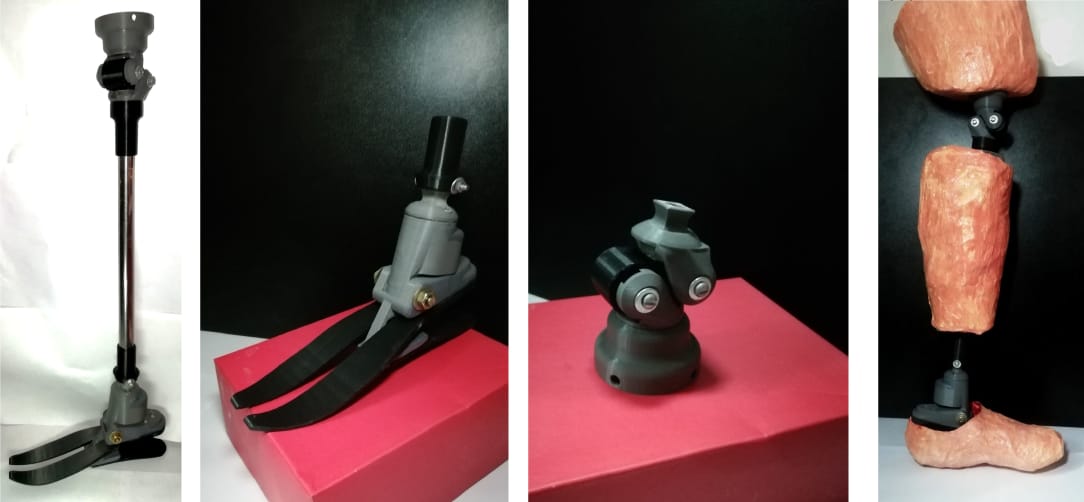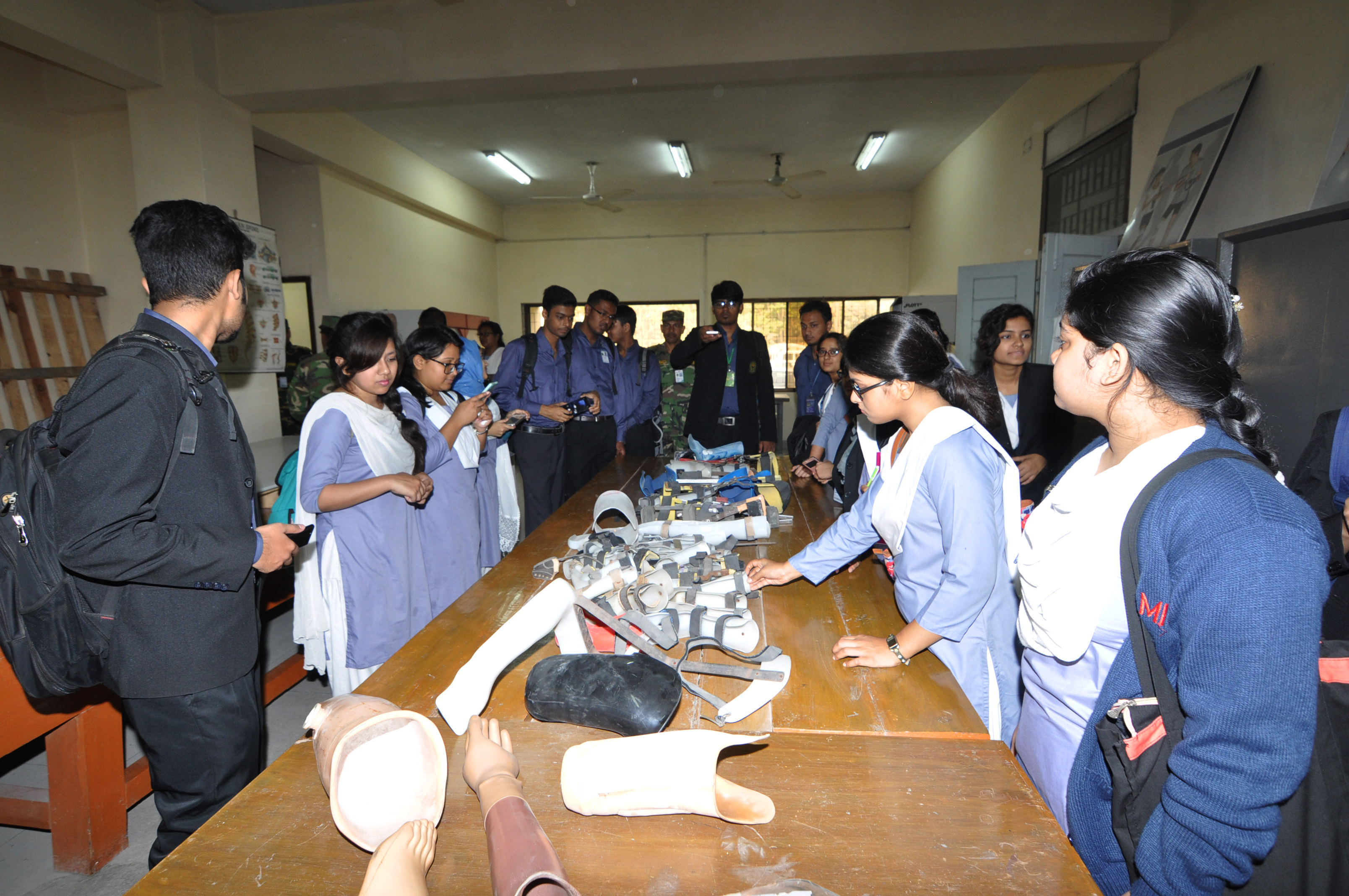Biomechanics and Rehabilitation Engineering

Fig: Model of a blood circulatory system by undergrad students of BME department
Biomechanics is the study of the movement of living things. This branch of biomedical engineering, closely related to kinesiology, involves the study of the forces generated by the body, as well the forces that act on the body. It is often used in improving the performance of athletes. The evaluation of the skeletomuscular system through motion and gait analysis for addressing clinical issues such as joint pain, injury, and physical disabilities, are of chief importance in rehabilitation. In rehabilitation engineering, technologies are developed to restore impaired motor or cognitive functions. Hearing aids, cochlear implants, orthosis, and prostheses are some examples of products designed in rehabilitation engineering for clinical applications.

Fig: Development of a prosthetic leg by undergrad students of BME department
Recent Research and Project Works
-
"Design and Development of a Cost-Effective Prosthetic Leg" supervised by Prof. Dr. Enamul Hoque
-
"Design and Development of Cost-Effective Lightweight Automated Wheelchair" supervised by Maj Md. Ashrafuzzaman, PhD, EME
-
"An Automated Biocomrade to Improve the Mobility of Disabled and Senior Citizens" supervised by Maj Md. Ashrafuzzaman, PhD, EME
-
"Development of a model of Blood circulation for laboratory purpose" supervised by Maj Md. Maruf Hasan, PhD, EME
-
"Computational Analysis of Hemodynamic Parameters in Cerebral Aneurysm" supervised by Dr. Muhammad Tarik Arafat

